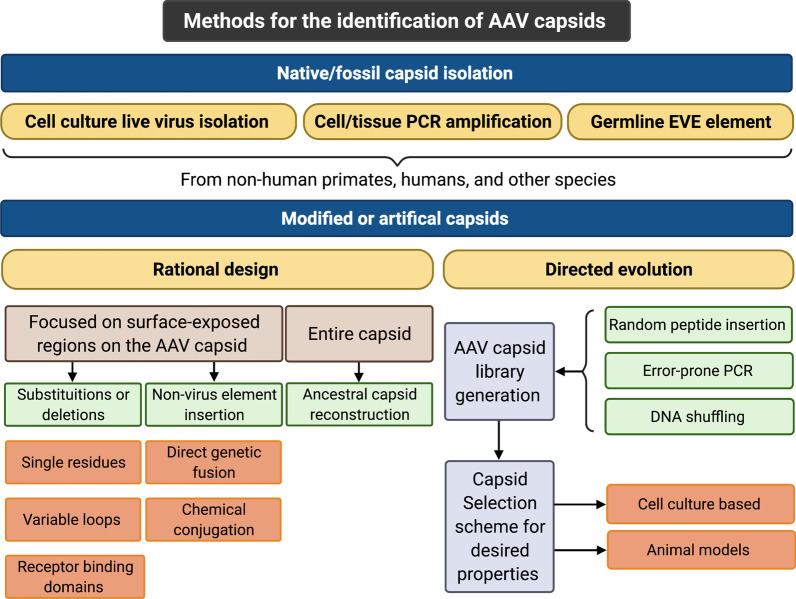Fig. 2.
Methods for the identification of AAV capsids. The AAV capsid is the primary determinant of cell/tissue tropism. Efforts to identify novel capsids with enhanced target specificity and low immunogenicity are divided into two broad categories: native/fossil capsid isolation and capsid engineering (rational design or directed evolution). Native/fossil capsid isolation is achieved through live virus isolation from tissue culture, AAV-specific PCR or genome mining. AAV capsid engineering relies upon modification of key structural and genetic elements via rational design or directed evolution. Rational design exploits known aspects of AAV biology and structure, often focusing on surface-exposed regions of the AAV capsid. Directed evolution couples library-generated AAV capsid diversity and a selection scheme to identify variants with distinct properties. Strategies to generate AAV capsid libraries include error-prone PCR, DNA shuffling, and random peptide insertion. The libraries are then screened in cell culture systems, animal models, or a combination of both. Figure created with BioRender.com

